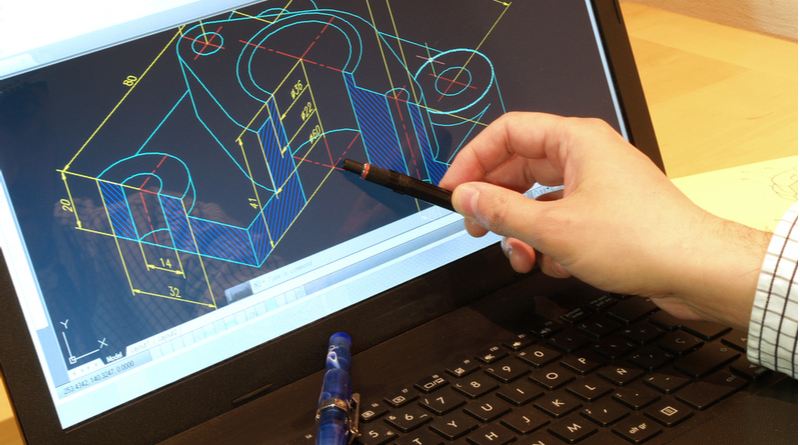Are you interested in the design process and designing new products? Then CAD Training courses might be for you and we recommend you find out more by starting right here!
Considering CAD Training Courses?
The use of computer software to help in the creation, modification, analysis or optimization of a digital design is CAD or Computer-Aided Design. To improve the designer’s efficiency and optimize the design, CAD software is used. CAD also enables designers to enhance collaboration through documentation and to build development databases.
CAD is used mostly for the detailed engineering of 3D models or 2D drawings of physical product parts, but it is often used in the engineering process, from conceptual design and product layout to strength and dynamic assembly analysis to the specification of component manufacturing methods.
You might think that a computer program as complex as CAD might be difficult to learn but one of the best parts about CAD designing is that it used the same simple tools that most people use on computers every day – cut, paste, copy and delete, making the learning curve a very easy one to master in a short space of time.
About CAD (Computer-Aided Design software)
Engineers, designers, and architects use CAD tools extensively. In a broad range of industries, it is used to create and design a variety of goods and components. CAD helps users to test existing goods and components and to learn more about them. CAD software achieves greater precision and eliminates errors.
In product and industrial design, CAD is used primarily for the production of detailed 3D solid or surface models or 2D vector-based drawings of physical components. CAD allows designers to model the entire object much more quickly and without the need to physically render the object.
In engineering, both the form and function of a product or part can be modeled and any designer flaws can be rectified before the creation of a physical prototype. Besides, CAD allows for the use of all standard symbols required for technical drawings and schematics.
CAD software is widely used all over the world in engineering, architecture, and design and in a vast array of products from jewelry, buildings, fashion, bridges, cars, furniture design, to even airplanes and space shuttles.
Due to its role in lowering product production costs, increasing efficiency, and enhancing product quality, CAD is highly beneficial. Better visualization of the finished product helps to speed up the process of design and results in a quicker time to get products to market.
What Will I Learn?
There are 5 types of CAD software available – 2D CAD (flat drawings of product), 2.5D CAD (Prismatic models), 3D CAD (3D objects), 3D wireframe and surface modeling (skeleton-like inner structure), and solid modeling (solid geometry).
- You could learn about 2D drawing, drafting and annotation, extended workflows, Xrefs and block palettes, dynamic blocks, 3D Mesh, and solid and surface modeling.
- You could learn product design simulation, product data management, cost estimation, and manufacturability checks.
- You could learn about parametric modeling, simulations, and visualizations.
- You will learn about the documentation of projects.
- You could learn about models components for building and fabrication
Career Opportunities
After completing your CAD Training course you could have a career as an Architect, Architectural Designer, Drafter, Electrical Engineer, Electronics Engineer, Plumbing Designer, Interior Designer, Industrial Engineer, Manufacturing Engineer, Mechanical Engineer, Product development engineer, Structural Engineer.
You could work in a variety of industries such as Aerospace and Aviation, Consumer Products, Manufacturing, Medical devices, Industrial products, Oil and Gas, Plumbing design, Architecture, Construction, and Engineering.
If you’re serious about doing a CAD Training course, check out courses near you in the Nightcourses.co.uk national course finder.







